The mining operation will develop three kimberlite pipes, which were first discovered a decade ago. All photos courtesy of De Beers Canada
After a rocky year, De Beers Canada is closing out 2016 on a positive note with the opening of Gahcho Kué. The mine, the newest producer in the Northwest Territories, adds more shine to the constellation of diamond operations in the Far North.
Allan Rodel can remember the exact time the first diamonds at Gahcho Kué were recovered – likely because it was in the wee hours of the morning. “We were there the night before, hoping to see the first diamonds,” he recalled. Rodel – Gahcho Kué’s project head – and his team stayed up nearly all night on June 29 waiting, but to no avail. On June 30 around 4 a.m., nearly two months after the commissioning phase began, the first diamonds were recovered in the sort house. Later that morning when the whole team had gathered “we had a good look at the stones,” said Rodel. “That was a very special moment for the team.”
Just over 20 years in the making, the Gahcho Kué diamond mine in the Northwest Territories, located 280 kilometres northeast of Yellowknife, could not have come of age at a better time.
In the months before the mine’s official opening in September, De Beers Canada put its first arctic diamond mine, the unprofitable and technically challenging Snap Lake, up for sale after placing it on care and maintenance at the end of 2015, and announced it would halt the extension project at its Victor diamond mine in Ontario until it got support from the Attawapiskat First Nation, on whose land the mine is located.
Gahcho Kué, a joint venture between De Beers Canada (51 per cent) and Mountain Province Diamonds (49 per cent), will help offset its parent company’s lowered diamond production. It is also a headline-maker in its own right; expected to produce 54 million carats during its life, Gahcho Kué is the largest new diamond mine in the world to be constructed in more than a decade. And with an estimated 4.5 million carats-per-year production, it will account for around three per cent of the world’s diamond market.
With three kimberlite pipes to mine over its current 12-year lifespan, Gahcho Kué will likely outlast nearby Diavik, and De Beers Canada CEO Kim Truter is hopeful it could even surpass Dominion Diamond’s Ekati, which recently had its mine life extended to 2033 with the Jay Pipe expansion. “At the moment our approved mine plan for Gahcho Kué goes out until 2028 and we think there are options to extend it, maybe until 2035,” he said. “We’re hoping that we can be mining at Gahcho Kué for the next 20 years.”
RELATED: Robert Gannicott remembered for keeping Canadian influence in country's diamond mining industry
The economic impact for the territory — and for Canada — is likely to be substantial. According to numbers from the De Beers Canada impact report, prepared by Ernst & Young, the mine is expected to inject an estimated $5.7 billion into the territorial economy. A socioeconomic agreement signed with the territorial government has set a target to draw 55 per cent of the mine’s employees from within the Northwest Territories. The mine has also signed Impact Benefit Agreements (IBAs) with six local First Nations, and has set targets for indigenous employment and contract sourcing. Currently the mine has a workforce of 333, excluding contractors; 46 per cent are from N.W.T., 20 per cent are indigenous and 14 per cent are women. By the end of next year there are expected to be around 550 employees and contractors at the site.
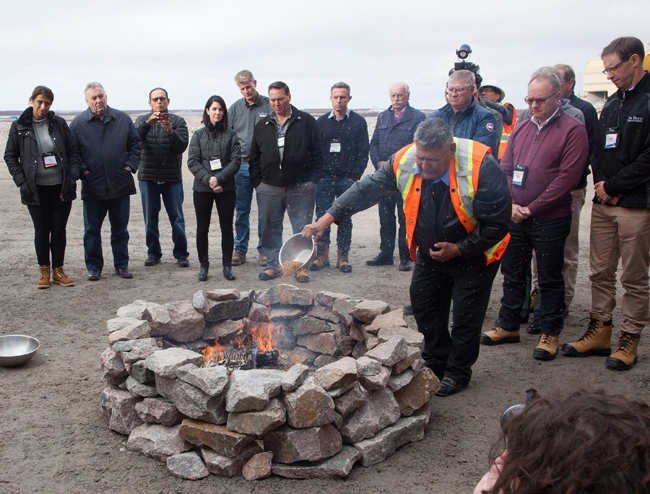
DeBeers officials and local leaders celebrated the opening of the mine in September with a traditional fire ceremony.
The company’s first foray into arctic diamond mining was a struggle; in addition to being plagued by water management issues, Snap Lake’s kimberlite deposit is more like a plate than the carrot-shaped kimberlite deposits common in diamond mining, and thus required a costly and complex underground mining method. But Gahcho Kué is a more conventional mine. All three deposits will be mined from the surface with a truck-and-shovel method at a mining rate of 100,000 tonnes per day and processing plant throughput of three million tonnes per year, and Truter said there is potential to eventually go underground. “[It’s a] much easier mine [than Snap Lake], it’s got a much lower cost structure,” Truter said, “and on the face of it, the mine looks like it will be much more typical of the Diavik and the Ekati-type configuration.”
Mined material will be treated at the processing plant by crushing, screening, dense media separation and X-ray sorting. “We use single-particle sorters, which are laser machines and are really unique to De Beers,” Rodel said. The diamond-rich concentrate is hand-sorted on site and sent to Yellowknife for cleaning and government evaluation.
The mine’s fine tailings (crushed and ground kimberlite) will be stored in what Rodel calls a “processed kimberlite containment facility” on site for the first five years, at which point it will be shut down and both fine and coarse tailings will start being deposited in the mined-out Hearne open pit, along with waste rock. The 5034 pit, when it has been fully mined, will also act as tailings storage, a new approach in the N.W.T diamond mining industry designed to minimize the amount of land disturbed. The plan, Rodel said, is to do “ongoing reclamation” over the life of the mine; both the coarse and fines processed kimberlite facilities will be reclaimed progressively during operations, and the lake will be refilled after the mine has stopped producing.
The icy road to production
The Gahcho Kué project began in 1995 when Mountain Province discovered the first kimberlite pipe, now the 5034 deposit – the first to be mined at the site. Two years later in mid-1997 De Beers Exploration, which had already signed a joint venture agreement with Mountain Province, discovered three additional pipes in the area: the soon-to-be-mined Hearne and Tuzo deposits, and the Telsa deposit, which Truter said “didn’t quite make the grade” to be mined, for economic reasons.
Like its sister diamond mines in the area, Gahcho Kué’s location presented logistical challenges the team needed to manage, from the arctic environment and remote location to the dewatering of Kennady Lake, under which the three deposits were found.
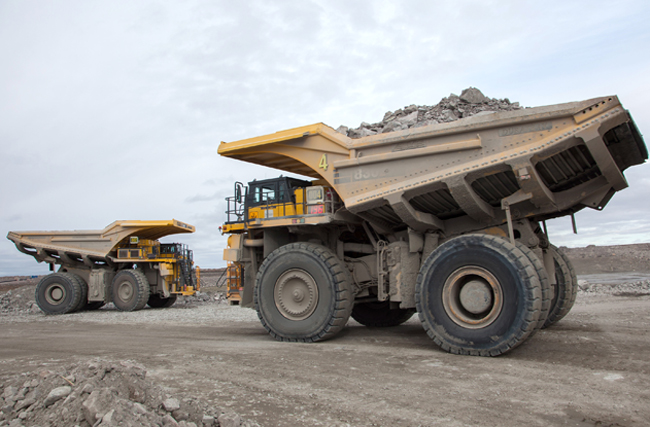
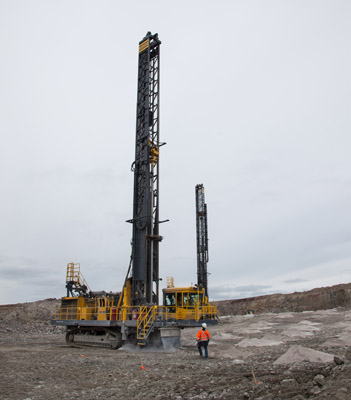
Once fully ramped up, the operation, which will use a conventional drill, blast, shovel and truck mining method,
will have a mining rate of 100,000 tonnes per day.
The harsh cold of the N.W.T.’s winter – the average temperature during the season’s coldest months is -30 C – meant the company needed to maximize its productivity in the summer months, and made pre-fabricated structures a necessity. Tasks as seemingly simple as pouring cement needed to be completed during small windows of time to keep construction moving smoothly. “There are a whole lot of things you can’t necessarily do in the winter, so that makes the project execution quite tough,” Truter said. “Because you’ve got to identify those windows of opportunity and then make sure you execute very, very well in those windows.”
Buildings, delivered in parts on the winter road, were erected and enclosed in the summer, allowing work to continue inside the buildings during the winter. Gahcho Kué’s accommodations facility was made up almost entirely of pre-fabricated modules, the site’s power plant consisted of five modules and the metallurgical laboratory also had several. Some of the mine’s fleet was also disassembled into smaller pieces in order to be trucked up the ice road to the site and reassembled there.
The ice road itself, reaching in excess of 40 inches thick and 120 kilometres long, is a spur off the road to Snap Lake that is only open in February and March each year. De Beers Canada estimates that around 2,100 loads of fuel, construction supplies, mining equipment and other materials are delivered on the road each year.
“The way the winter road manifests practically is it means that you’ve got to really think through the long lead times,” Truter said. It requires the planners to think upwards of a year ahead for what supplies will be needed – and there is no room for deviation or last-minute whims.
“Most of the big-ticket items all come up the winter road and you stage them correctly so they get delivered to site in the right sequence,” added Rodel. Bulk supplies like fuel and explosives are also brought up the winter road, and there is enough storage space on site for a full year’s usage.
Fuel is one area where De Beers was limited by the constraints of Gahcho Kué’s location. Both the mine and its entire fleet are diesel-powered, requiring the company to bring up around 47 million litres of diesel during the 2017 ice road season. An all-season road to the site may have allowed for a different energy mix, Truter said, but one never came together.
However, the company is getting creative by using waste oil burners to generate heat through the burning of used engine oil, and capturing additional waste heat from the site’s five generators, to heat the offices and camp spaces through a glycol system rather than baseboard heating, which also consumes diesel fuel.
To get access to the deposits, Kennady Lake needed to be fished out and dewatered. In 2014 and 2015, fish-out teams, made up of community members and biologists, caught 18,400 fish from the lake; the large ones were cleaned, filleted and frozen on site and given to nearby communities for events and stocking communal freezers. The smaller fish were provided to local dog teams.
The dewatering process is an ongoing one; during the construction phase, Rodel said, the mine was allowed to de-water around 18.6 million cubic metres to lower sectioned-off parts of lakes to expose the kimberlite using a series of dykes. Ten have been constructed so far. During the mine life, 3.45 million cubic metres can be discharged per year if the site meets stringent requirements set by the Mackenzie Valley Land and Water Board. The process involved installing pumps and de-watering systems in the middle of winter, which Rodel said required “very, very focused” work. A series of 14 dykes will be used to manage the surface water on the mine site.
Rodel said the mining pre-strip work has presented some “very unique” challenges, because the team is mining the lake bottom, “pre-strip mining involved using plating and smaller equipment to safely and efficiently remove the surface till material.”
Off on the right foot
The company has a full-time environmental monitor on site representing the Ni Hadi Xa monitoring committee, an environmental stewardship committee made up of the six indigenous communities. The monitor reports directly to the committee and ensures the company meets its permit requirements; the program also includes monitors who use traditional knowledge of the water, land and wildlife to track Gahcho Kué’s environmental impacts on the area. “You can’t have it any more transparent than having somebody at your site working in your team ensuring that you stick to the rules,” Rodel said. The company also has wildlife and habitat management plans for caribou, grizzly bears, wolverines and birds.
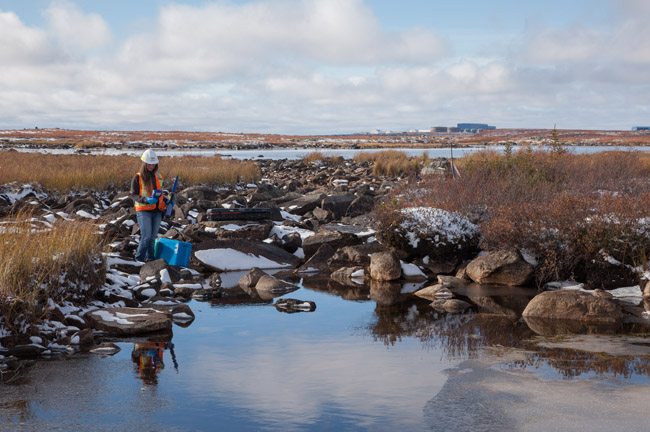
The results of environmental monitoring are reported to a committee made up of members from local indigenous communities.
Gahcho Kué is off to an auspicious start. The mine began ramping up to production two months ahead of schedule within its $1-billion budget, and already has two awards under its belt; the site was named Project of the Year for Hatch’s project management from the Quebec Association of Professionals in Project Management’s (PMI) Montreal Chapter, and won the workplace health and safety award from the Yellowknife Chamber of Commerce. And despite the current plateau in the price of diamonds, Truter said he sees a sparkling future for the commodity.
“The long-term fundamentals of the diamond industry are very solid,” he said. “When you compare it to other commodities, we’re part of one of the few industries where long term we do not appear to be able to match demand.”
And within the industry, Truter said, Gahcho Kué stands out among its peers. “It’s a very high-margin operation...and we’ve got multiple pipes, which is actually really important,” he said. “Gahcho Kué really is the future of the Northwest Territories.”
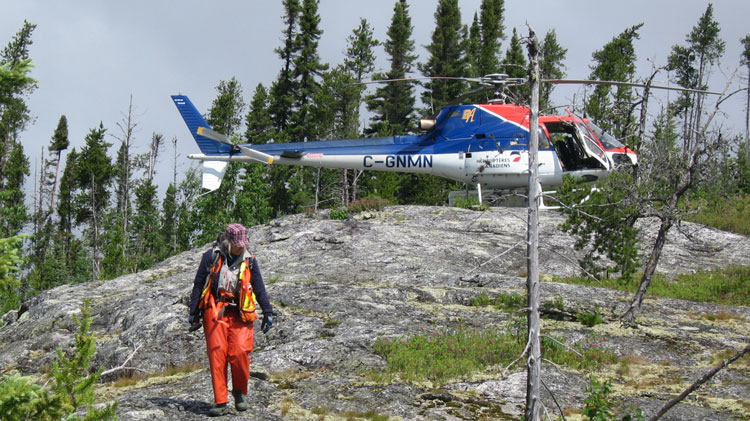
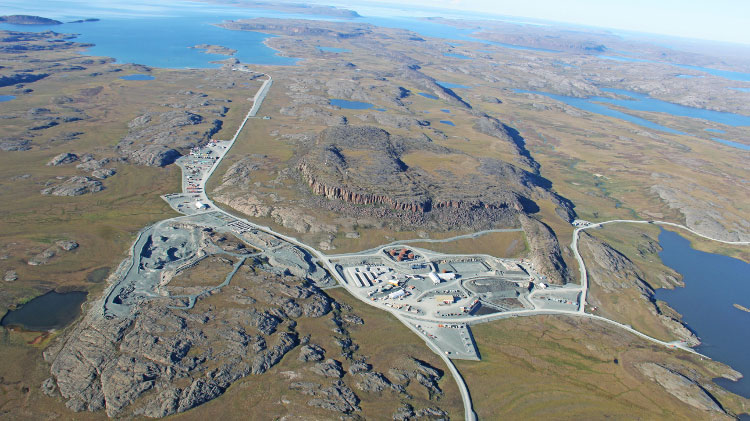


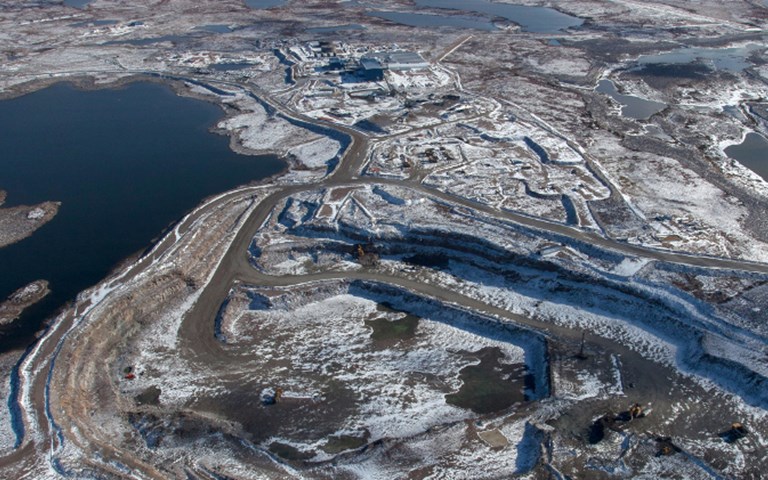



 The results of environmental monitoring are reported to a committee made up of members from local indigenous communities.
The results of environmental monitoring are reported to a committee made up of members from local indigenous communities.